Wish you were here: Missing my postcard pals
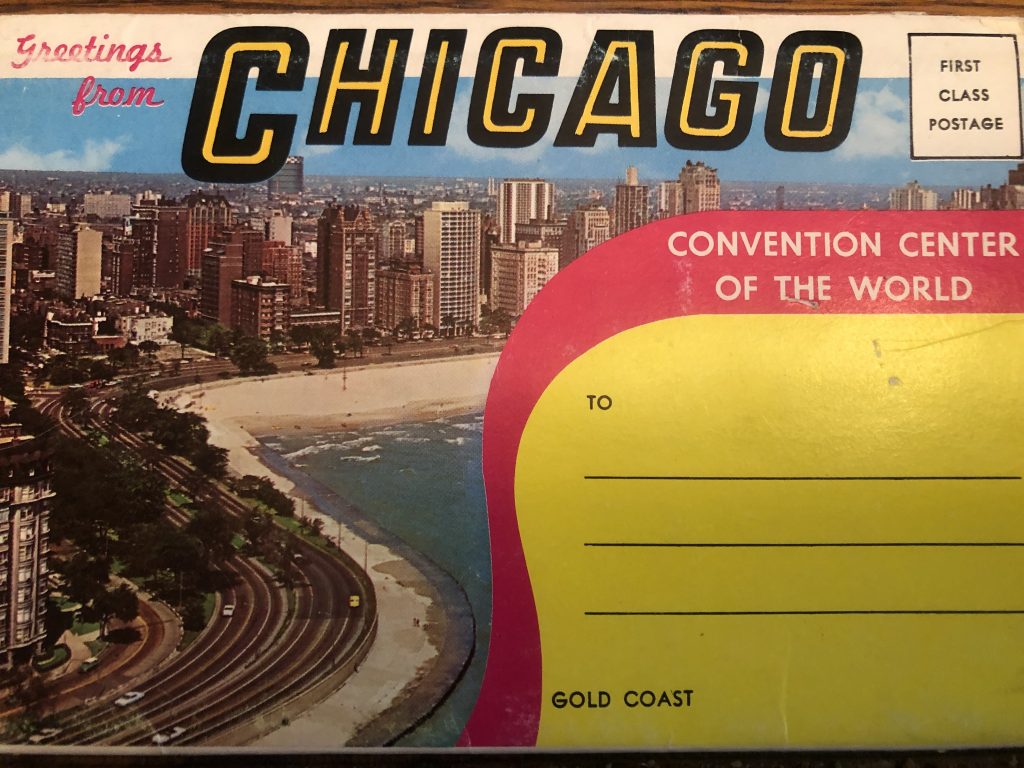
All postcards are from the author’s collection and not from the web.
I once knew of simple passages where I could find adventure.
The Antique Trove in Scottsdale, Az. and Antiques on Pierce in Milwaukee each contained booths filled with bright postcards busting at the seams in rows of white memory boxes. The backsides told of new horizons, unadorned pleasures, and a longing for the reader on the other end. The postcards were neatly organized by states, countries, and themes (Baseball, birds, Christmas, diners, etc.) I visited each antique store in the last couple of months.
The collection in Milwaukee became disorganized over time. A couple of weeks ago all the postcards were gone. I was told the elderly proprietor was in an automobile accident from which she never recovered. I met her several years ago during a Saturday afternoon Christmas time visit. Squinting through her glasses, she was meticulously reorganizing postcards that people had misplaced. This was her place in the world.
Last month in Scottsdale, most postcards were on sale for a dollar. That owner had also passed away and his children had no interest in the collection. Postcards will soon become another broken chain in collective America.
Of course, when I need a specific postcard for a project I’ve looked at eBay. But the discovery and wonder of going through physical postcards is something I will miss. Several times I bought a postcard, not for the picture on the front, but the message on the back. I was touching past thoughts.
These are my two favorites:
Bloomingdale Insane Asylum, Worcester Mass.
The front side depicts a luscious green lawn with a castle-like hospital in the background. The postcard–with a one-cent Benjamin Franklin stamp– is addressed to a woman in Milwaukee. The only note is, “From your husband” with his signed name.
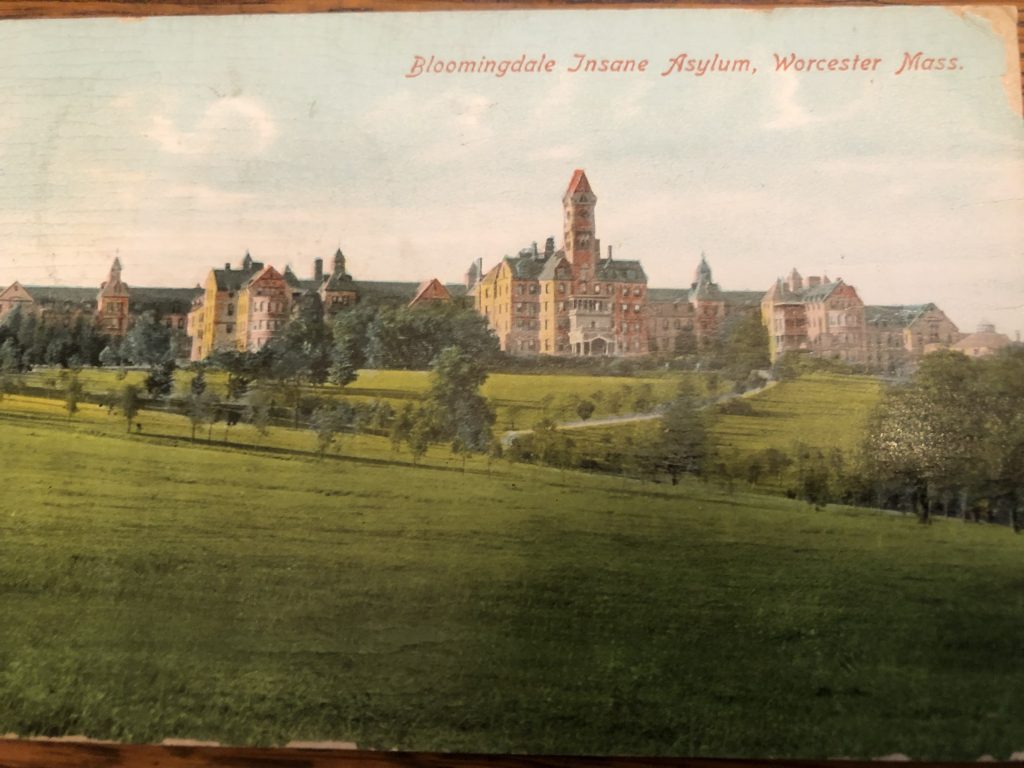
Kivel Nursing Home, 3020 N, 36th St., Phoenix, Az.
This one is postmarked on Jan. 21, 1965. The Abraham Lincoln stamp is four cents. The front of the postcard features a sleek, one-level building with three cars parked in front. The sky is pure blue. There are no people in the parking lot, although Harry Dean Stanton might be there soon. The postcard is addressed to James and Katherine (I’m leaving out the last name.) In a crooked script, the note reads, “Dear James & Katherine., I feel fine. Dolly (different last name.)”
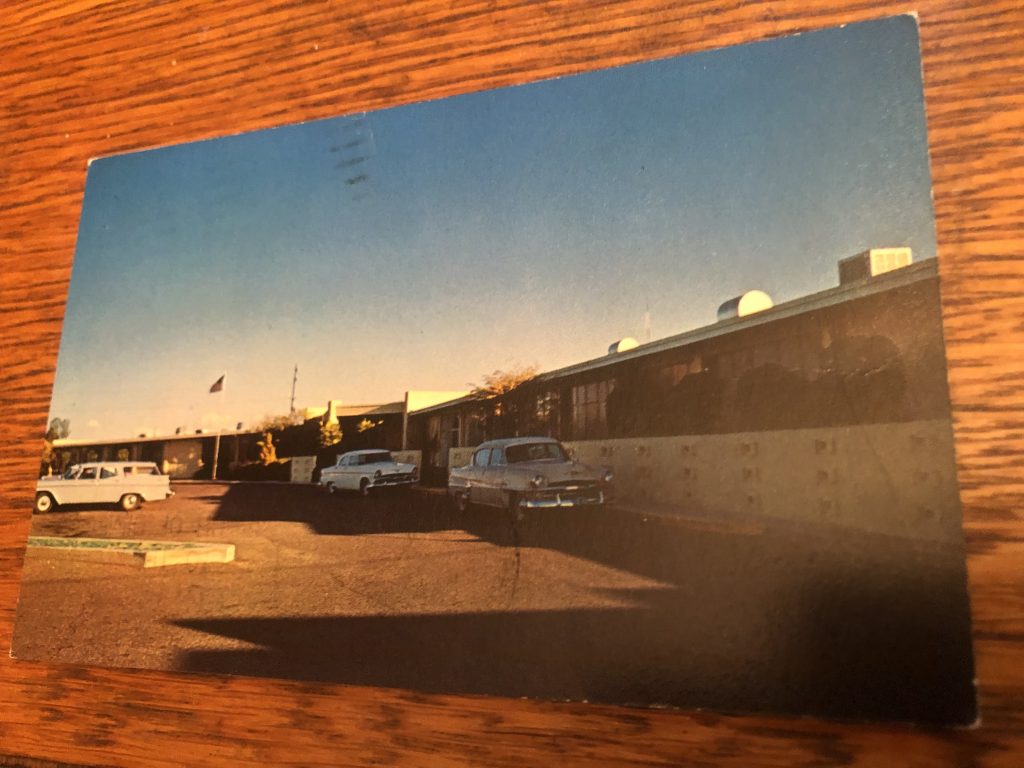
That’s the beauty of postcards.
If Dolly was e-mailing or Facebooking James and Katherine, her message would be filled with drama and complaints.
I’ve saved sweet postcards from my parents, brother, former wife, and girlfriends. Someday somebody will throw out all of them.
Before our family was transferred back to Chicago from Columbus, Ohio, my Dad sent me a fold-out postcard from Chicago, “The World’s Greatest City.” The inside says in part, “There’s warmth and spaciousness and elbowroom. And Chicago smiles at you as you stroll along her busy streets.” This was 1965. The postcard was published by Cameo Greeting Cars, 4874 N. Lincoln Ave. in Chicago.
The American postcard was born in 1893 in Chicago. The first picture postcards that didn’t have to be placed inside an envelope were printed in 1893 for the Chicago World’s Columbian Exposition.
Those who collect picture postcards are called deltiologists. (Derived from Greek “writing tablet.”) “A lot of things don’t exist anymore, so they’re an important record,” Rod Kennedy, president of the seventy-year-old Metropolitan Postcard Club of New York City told the New York Times in 2018. “We are sort of the custodians.”
My postcard collection also includes a colorful book of 20 postcards that I never sent. These came from a trip to the Madonna Inn in San Luis Obispo, Ca. The themed 110-room hotel is designed in somewhat fantasy, erotic and hallucinogenic detail by the late husband and wife team of Alex and Phyllis Madonna. Each room has a bizarre theme: “Antique Cars,” “Pioneer America” and “Country Gentleman.”
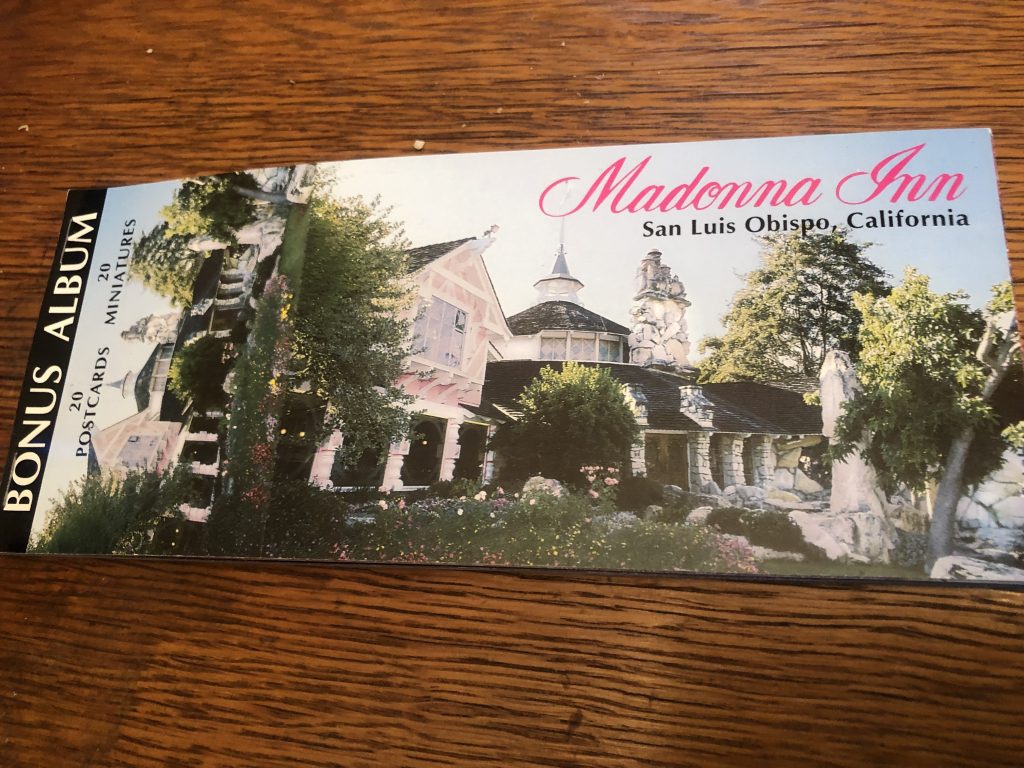
My favorite is “The Caveman Room.” It features solid rock floors, walls, and ceilings as well as a rock shower and sinks that are recast as waterfalls. A custom handcrafted stained-glass window welcomes natural light into the room. It is the most popular room at the inn.
I was proud to be able to snag it during my last visit to the Madonna Inn about a dozen years ago. I met a friend from San Francisco and was excited to show her the Caveman Room. I was aware she was a devotee of Feng Shui, but I never knew how serious that was until she saw the Caveman Room. She looked at all those rocks and had a lava-like meltdown. So no reason to send postcards from this stop.
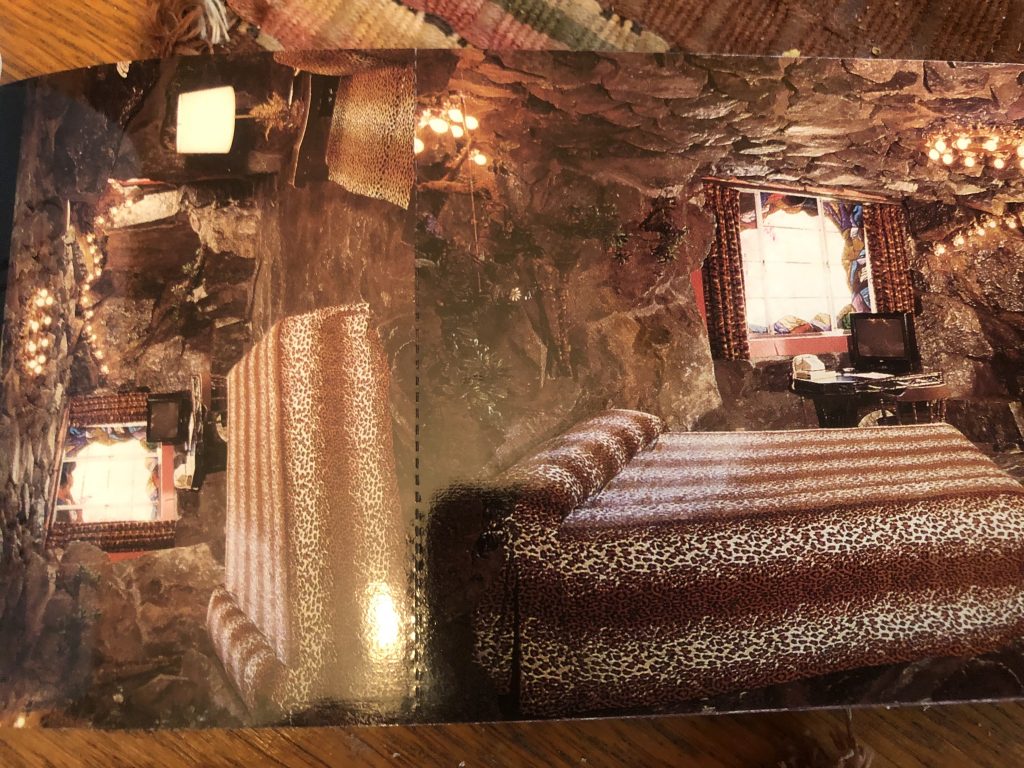
The Caveman Room. We hardly knew you.
Years ago when I landed in San Francisco, I would first visit City Lights bookstore and have a beer next door at the Vesuvio Cafe. Then I’d walk up Grant Street to visit Quantity Postcards, a North Beach storefront with nothing but postcards. I was suddenly on vacation while on vacation.
Quantity had hundreds of postcards. Some were from faraway places and others were weird like the photograph-card of nudist orange packers and “Pip and Flip, Twins from Yucatan” who appeared at a Coney Island sideshow. Quantity opened in 1979 and closed its physical location in 2001. Owner Wyatt Landesmann blamed email for the store’s demise.
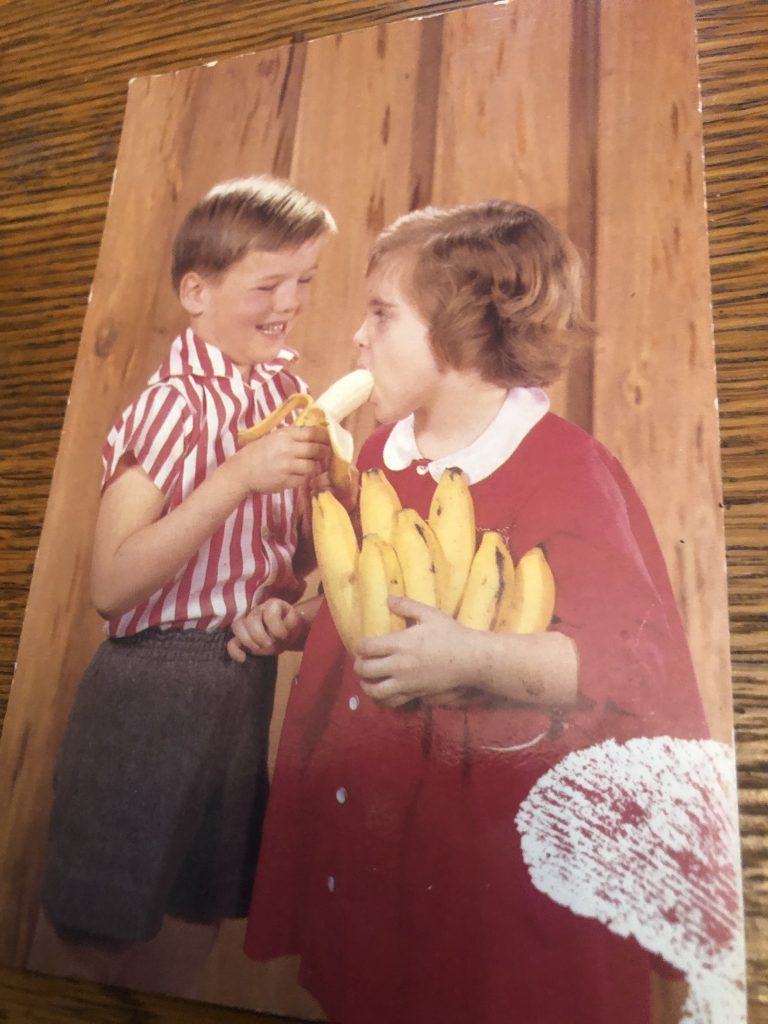
From my “sharing” category. I got this at Quantity in San Francisco.
There are still pockets of discovery for postcard fans.
The Curt Teich Postcard Archives Collection is the largest public collection of postcards and related materials in the United States.
The Curt Teich postcard company operated between 1898 and 1978 in Chicago.
Teich was a German printer who immigrated to Chicago in 1895.
In 1905, he decided to travel alone by train to the West Coast, disembarking at every point to photograph local points of interest. Merchants paid him $1 per minimum order of 1,000 cards and in 990 days, Teich sold $30,000 in orders.
The Teich Company location at 1755 W. Irving Park is now Postcard Place Lofts. In 2016 the Teich collection was transferred to the Newberry Library in Chicago from the Lake County Discovery Museum in Wauconda, Ill, which was its home since 1982. When the collection landed at the Newberry it was estimated to have more than 500,000 unique postcard images. National magazines use the archives for illustrations.
There’s also the virtual Chicago Postcard Museum. The collection of Chicago postcards seems a bit dormant. The website says to enjoy the Marshall Field online exhibit up through July 2008, but it works.
And, just last week Ray Johnson c/o opened at The Art Institute of Chicago. The mid-century artist (1927-1995) was known for his seminal role in conceptual and pop art through colorful collages and expressive mail art. Mail art is the movement of sending out small-scale works through the postal service. Expressions can be delivered through postcards, a collage of found images, rubber stamps, and artist-created stamps. Johnson was considered to be the first mail artist dating back to 1943. He often said, “Mail art has no history, only a present.”
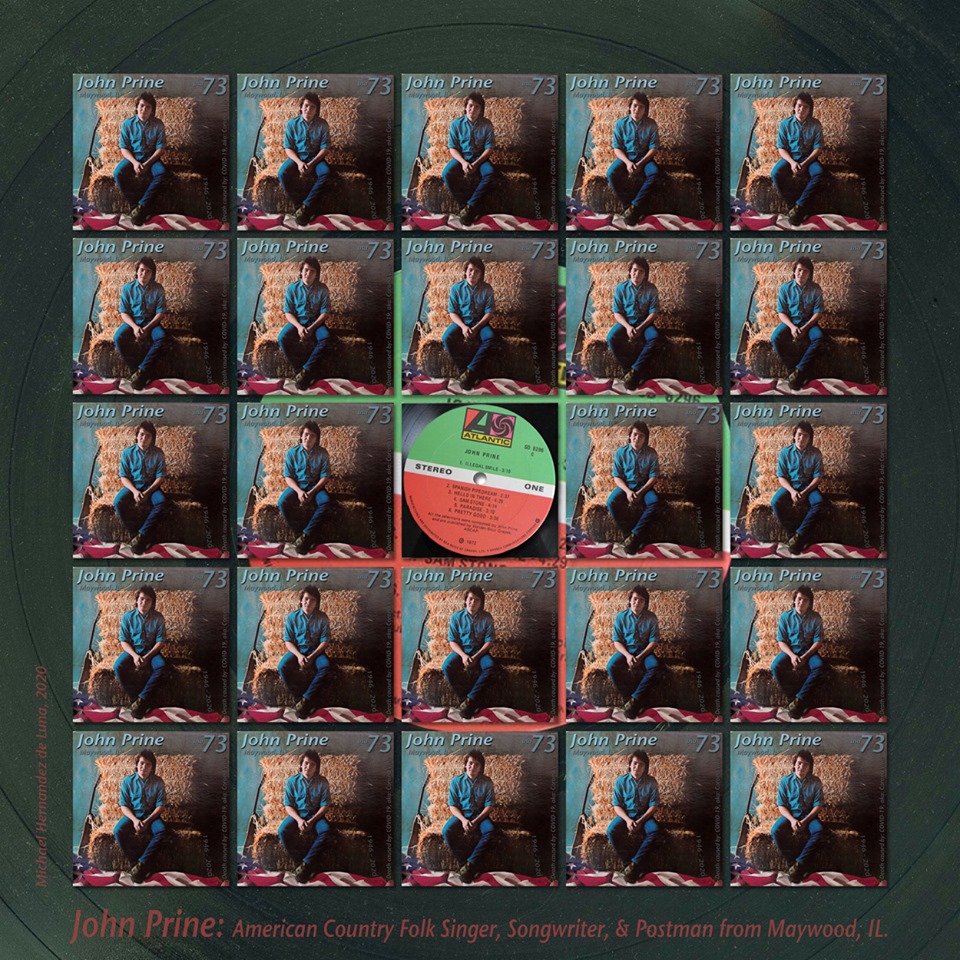
Mail art for a timeless mailman.
My friend Michael Hernandez de Luna is Chicago’s premiere mail artist. Check out his 2008 book “American Beauty” (badpress books.)
Also, check out the John Prine stamps he made in an effort to kick start a commemorative stamp for the beloved former mailman and singer-songwriter. John grew up in west suburban Maywood as did Michael.
I bought my insane asylum postcard some 20 years ago from Ed Ratliff, a postcard vendor at the Kane County Flea Market outside of Chicago. Ed was elderly. You don’t see any young postcard vendors. He told me that actor Bill Murray once checked out his booth of more than 50,000 postcards. And veterinarians from Brookfield Zoo bought his animal postcards. He admitted postcards are easy to steal. All his golf cards were stolen. Twice.
I asked Ed about his most memorable postcard. “It was mailed in the morning from a small town,” he said. “They wrote, ‘Meet us on the afternoon train.’ I don’t recall the cover, but it went to the other town 50 miles away, and the message was to meet them at 6 p.m. the same day.
“The world isn’t like that now.”

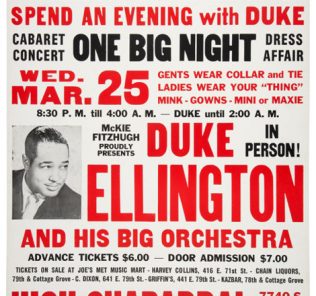
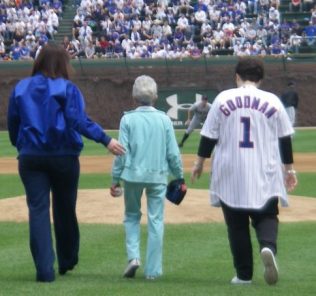
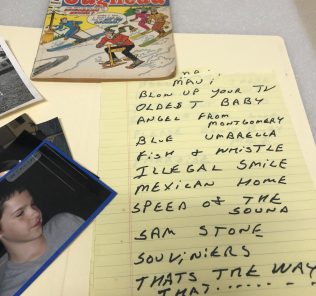

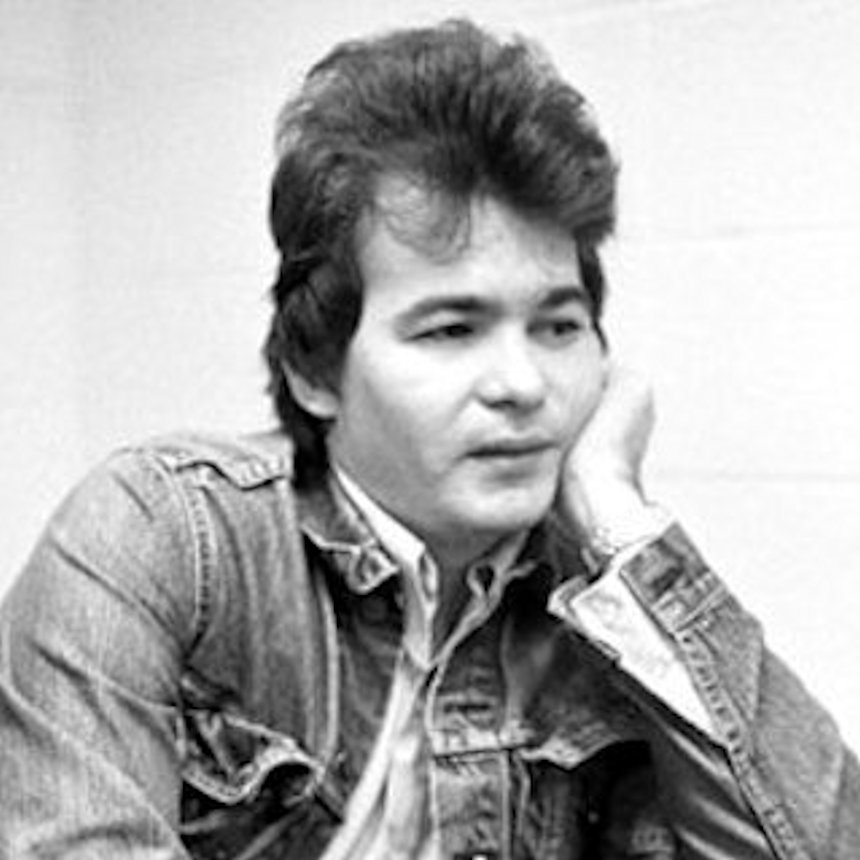
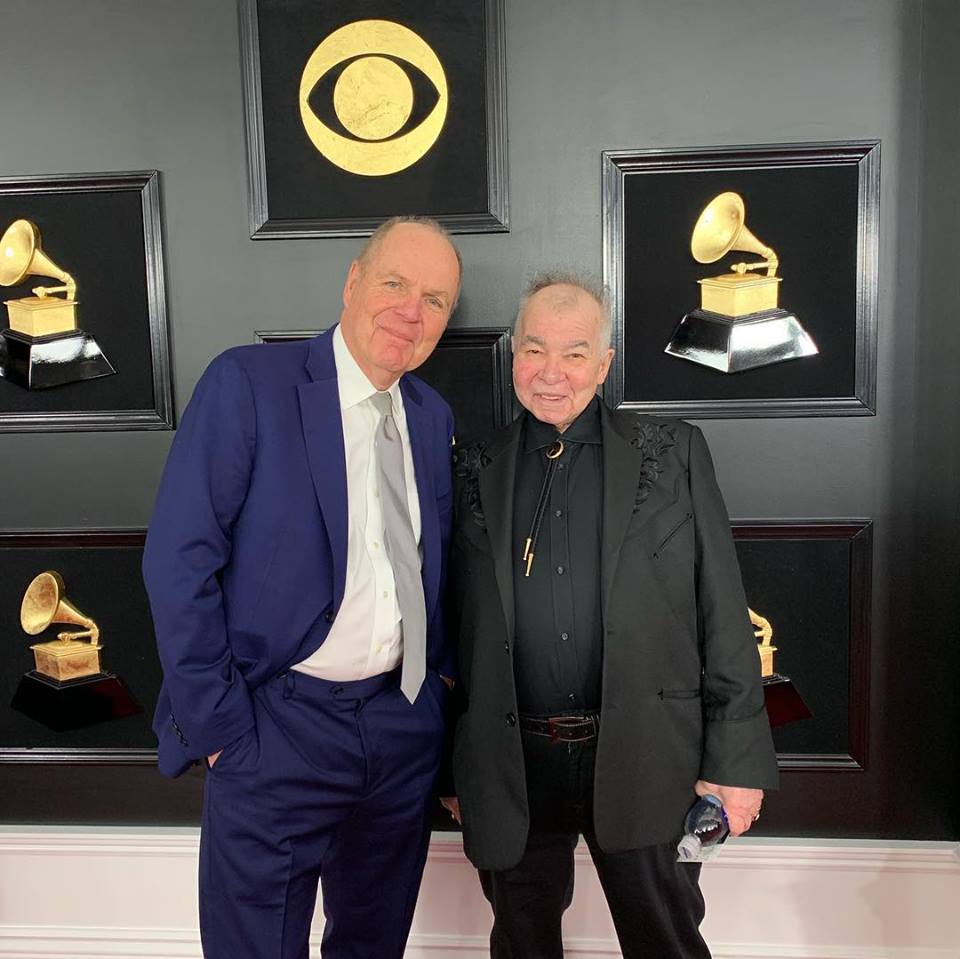


Leave a Response